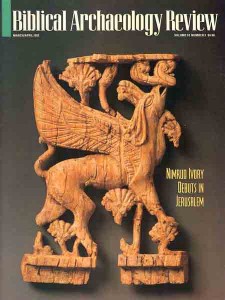
Solomon’s magnificent Temple to Israel’s God, which we now call the First Temple, was destroyed by the Babylonians under Nebuchadnezzar in 587/586 B.C. In about 444 B.C. the returning Exiles led by Nehemiah constructed a new Temple, the Second Temple. Hundreds of years later, the Second Temple was rebuilt by Herod the Great (37–4 B.C.), only to be destroyed by the Romans in 70 A.D. Each of these stood on a platform built to create a level surface known as the Temple Mount. In connection with its construction activities Herod doubled the size of the previous Temple Mount. Scholars have despaired of ever discovering the position of the original Temple Mount. Until now, that is. Leen Ritmeyer, combining the triple talents of historian, writer and architect, takes on the challenge of “Locating the Original Temple Mount.” Starting with a telltale clue at the base of what is today the platform supporting the Dome of the Rock, Ritmeyer systematically amasses the evidence he needs to make his convincing proposal. In the process, Ritmeyer explains how the Temple Mount grew in three stages, not two, as was previously thought. In addition to plans and drawings by Ritmeyer and an abundance of photos, the article is enhanced by Ritmeyer’s adaptations of plans made by the greatest underground explorer of Jerusalem of all time, the 19th-century engineer Sir Charles Warren.
Already a library member? Log in here.
Institution user? Log in with your IP address.

